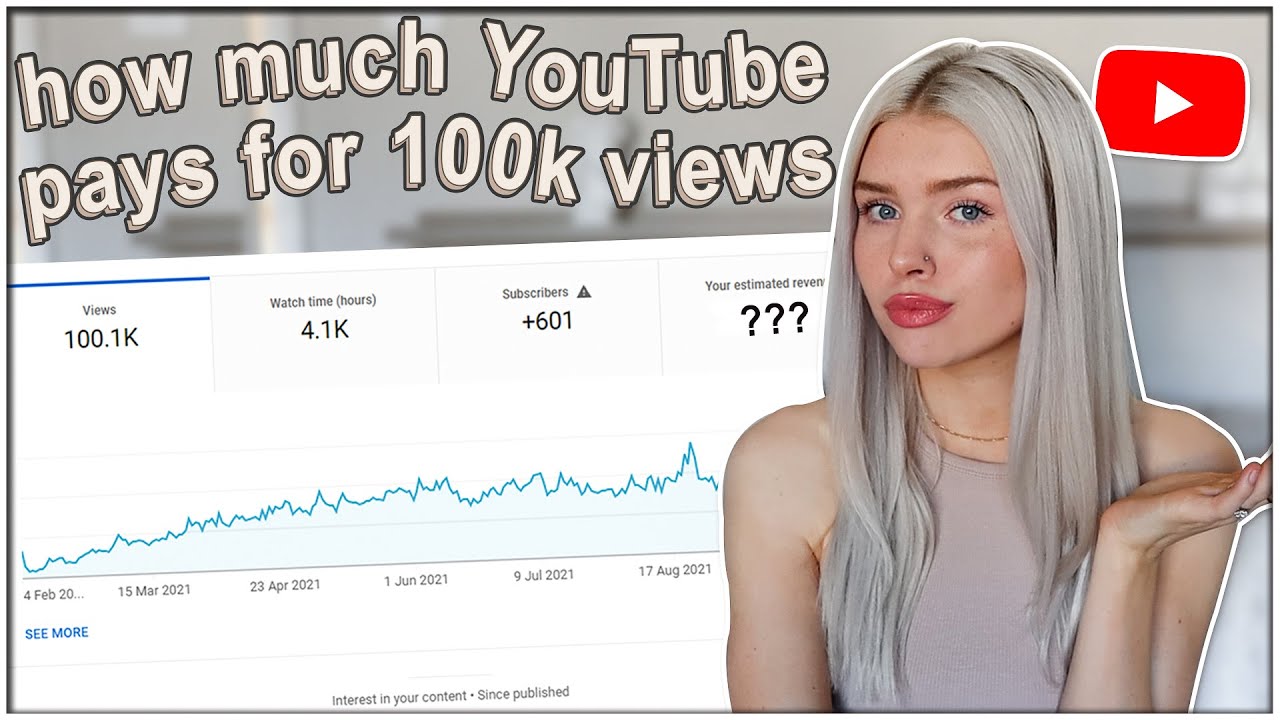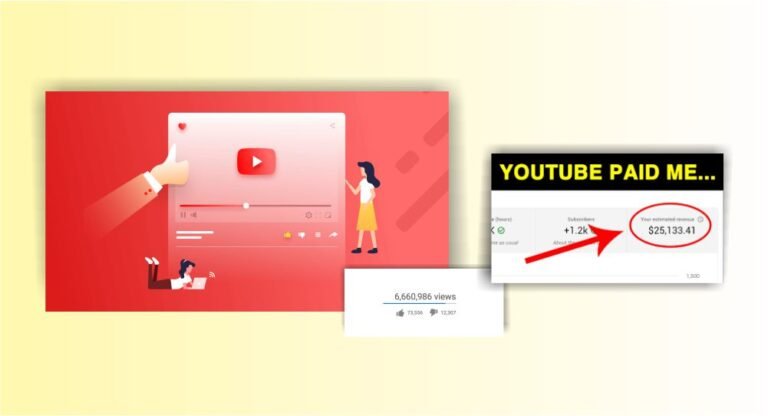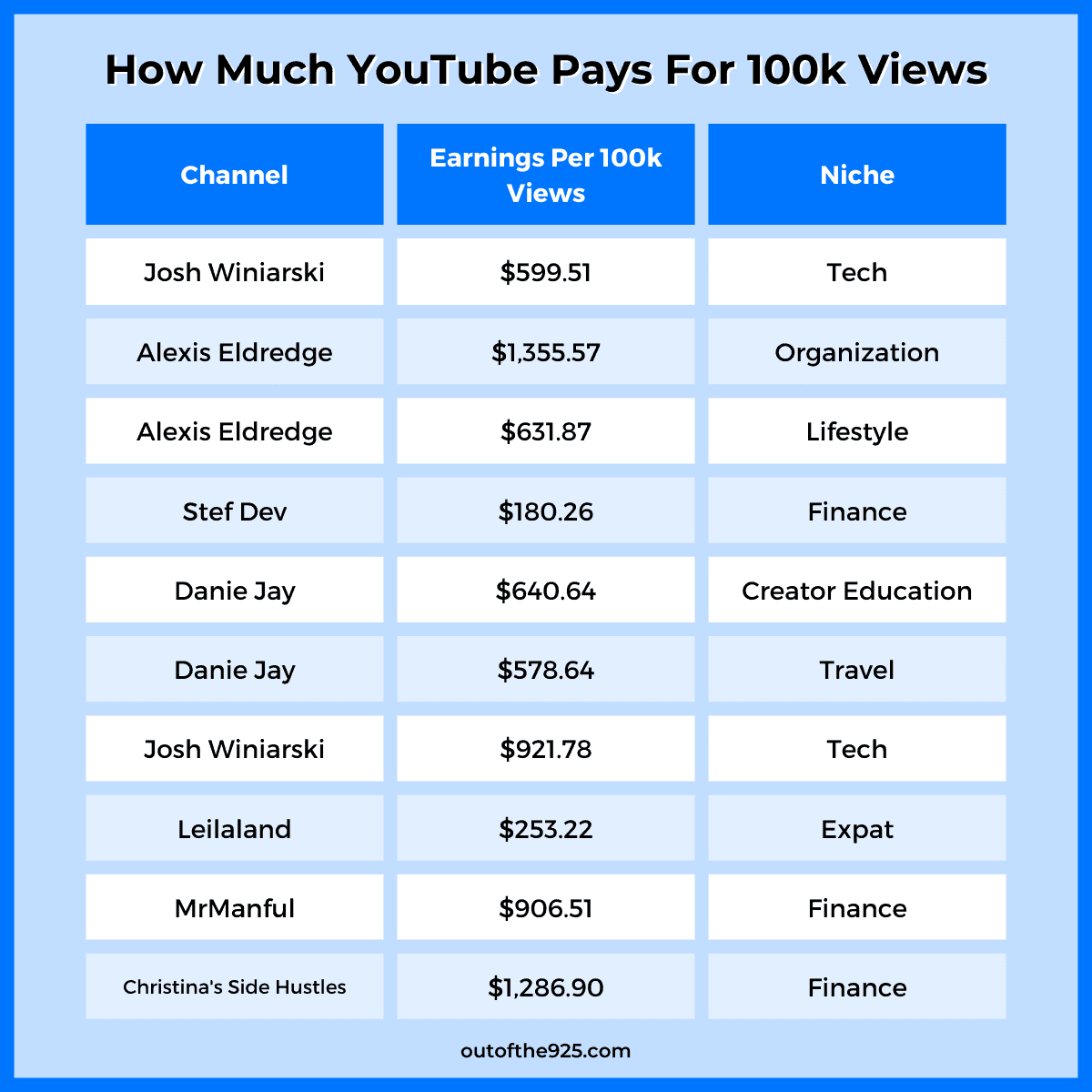YouTube monetization is a topic that has gained massive attention in recent years, especially as more creators join the platform hoping to turn their passion into profit. But how does it all work? Simply put, monetization allows content creators to earn money from their videos via various sources, primarily advertising. However, it’s not just about views; it involves a mix of elements that come together to determine a creator's earnings. In this post, we will specifically discuss how much YouTube pays for 100,000 views and dive into the intricacies of the monetization process.
Factors Influencing YouTube Earnings

When it comes to calculating how much money a YouTuber can make from 100,000 views, several factors come into play. It’s not a straightforward equation, and understanding these variables can help clarify why some creators earn significantly more than others. Here’s a breakdown of the key factors:
- Ad Revenue: This is the primary source of income for many creators. YouTube uses a system called CPM (Cost Per Mille), which indicates how much advertisers are willing to pay for every 1,000 ad views. CPM rates vary widely based on:
- Content Type: Some niches like finance or technology usually attract higher CPMs.
- Target Audience: Certain demographics, like adults aged 25-54, tend to generate better ad rates.
- Viewer Engagement: The more engaging your content, the better your earnings. Metrics such as watch time, likes, and comments can affect ad placements. If viewers stick around for the entire video, this signals to YouTube that your content is worth promoting.
- Geolocation: Where your viewers are located matters. Ad rates are typically higher in countries like the United States or Canada than in developing nations.
- Ad Formats: Different ad types yield varying earnings. Skippable ads may earn less compared to non-skippable ads, and overlay ads also have different CPM rates.
- YouTube Partnership Program: Joining this program enables creators to earn from ads, channel memberships, and more. Eligibility requires meeting a threshold of 1,000 subscribers and 4,000 watch hours within the last 12 months.
To summarize, while 100,000 views might sound like a golden ticket to riches, it depends on various nuanced factors that determine how much a creator actually makes. Understanding these can help aspiring YouTubers strategize about their content and monetization options.
Also Read This: Cost and Inclusions of the Royal Rumble 2024 Pay-Per-View
Average Revenue for 100K Views

When it comes to understanding how much YouTube pays for 100,000 views, it’s important to remember that the figures can vary widely. Generally, a YouTube creator could make anywhere from $100 to $1,000 for this number of views. What influences this range? Let's break it down:
- Niche of the Content: Certain categories, like finance or technology, tend to attract advertisers willing to pay more for ad placements. For instance, a finance video could earn a creator significantly more than a gaming video.
- Geographical Audience: If the majority of your viewers are from countries with a higher purchasing power (like the USA, Canada, or Western European nations), you might see higher earnings compared to audiences from developing countries.
- Engagement Levels: Videos that keep viewers engaged often have higher retention rates, which can lead to more ads being shown, thereby increasing potential earnings per view.
Moreover, changes in YouTube's algorithm or shifts in advertiser spending trends can also affect how much you earn. Remember, making money on YouTube isn't just about reaching 100K views; it's also about the audience's behavior while watching your content. So, keep creating quality content that resonates with your viewers!
Also Read This: What You Can Expect at Major Technology Conferences Across the USA in 2024
Payment Structure: Ad Types and Rates

Understanding YouTube's payment structure is vital for anyone looking to monetize their content effectively. The platform primarily pays creators through its Partner Program, which relies heavily on advertisements. Let's break down some key types of ads you might encounter:
| Ad Types | Description | Typical Rates |
|---|---|---|
| Display Ads | These appear on the right sidebar of the video. | $0.10 - $0.30 per click |
| Overlay Ads | These semi-transparent ads appear at the bottom of the video. | $0.05 - $0.10 per click |
| Skippable Video Ads | These ads play before, during, or after the video. Viewers can skip after 5 seconds. | $0.01 - $0.03 per view |
| Non-skippable Video Ads | These must be watched before the video can be viewed. | $0.04 - $0.10 per view |
Each of these ad types can earn different rates, depending on the advertiser's budget and how compelling the content is to viewers. In general, skippable and non-skippable ads tend to bring in the most revenue. However, the actual payments depend not just on ad clicks or views but also on factors like CPM (cost per mille) rates, which further depend on the audience segment.
So, if you’re aiming for monetization success on YouTube, familiarize yourself with these ad types and prioritize content that attracts quality advertisers!
Also Read This: Understanding YouTube TV Streaming Limits
5. Additional Revenue Streams for YouTubers

YouTube isn't just a platform for sharing videos; it's a thriving ecosystem where creators can earn money through various channels, often beyond mere ad revenue. Let's explore some of these additional revenue streams that many savvy YouTubers tap into to maximize their earnings.
1. Sponsored Content
One of the most significant income sources for YouTubers comes from sponsored content. Brands pay creators to showcase their products or services in their videos. This can range from a simple mention to an entire video dedicated to a particular brand. Depending on the reach of the channel, sponsors can pay anywhere from a few hundred to several thousand dollars.
2. Merchandise Sales
If you've built a loyal fan base, selling merchandise can be a fantastic way to cash in. T-shirts, hoodies, hats, and other branded items resonate with fans who want to support their favorite creators. Many channels partner with platforms like Teespring or Merch by Amazon to simplify the process.
3. Affiliate Marketing
By promoting products through affiliate links, YouTubers can earn commissions on sales generated through their recommendations. This strategy is common in tutorials and reviews, where creators direct viewers to purchase items they discuss.
4. Crowdfunding and Membership Programs
Platforms like Patreon allow fans to support their favorite creators through monthly memberships, often in exchange for exclusive content or perks. Additionally, YouTube has introduced features like Channel Memberships, where subscribers pay for added benefits.
All these avenues combined can significantly increase a YouTuber's overall revenue, making content creation a lucrative venture for many!
Also Read This: How DJs Make Money on YouTube Tips for Monetizing Music Channels
6. Case Studies: High and Low Earnings Examples
When it comes to earnings on YouTube, it’s fascinating to see just how varied they can be based on different factors like niche, audience engagement, and the creator's strategy. Let's look at some case studies showcasing both high and low earnings from channels that have garnered around 100K views.
| Channel Type | High Earnings Example | Low Earnings Example |
|---|---|---|
| Tech Reviews | Channel A earns approximately $800 for 100K views due to high CPM values. | Channel B struggles with only $150 for the same views due to lack of engagement and low-value ads. |
| Beauty & Lifestyle | Channel C brings in around $600, heavily complemented by sponsorships and affiliate links. | Channel D only makes about $100 due to limited niche appeal and lower ad rates. |
| Gaming | Channel E generates $700 through a combination of ads, merch, and donations during livestreams. | Channel F only reaches $120 from ads alone, as monetization strategies are not fully utilized. |
The variation illustrates that while some YouTubers can rake in remarkable amounts, others may find the earnings disappointing. Ultimately, a creator's strategy in monetizing content plays a crucial role in determining their success on the platform. So, whether you're looking to start your channel or already established, understanding these factors can help you navigate the YouTube landscape more effectively!
Also Read This: Can You Download from IMDB? Here is What You Need to Know
How Much YouTube Pays for 100K Views
YouTube monetization can be a lucrative avenue for creators, but how much does YouTube actually pay for 100,000 views? The answer isn't straightforward, as several factors influence the earnings from a particular video. This post delves into the nuances of YouTube revenue and what content creators can expect.
The pay per 1,000 views (known as CPM) varies significantly based on:
- Niche: Channels in finance, technology, and health typically have higher CPM rates compared to lifestyle or entertainment channels.
- Geographic Location: Views from countries like the USA, Canada, or Australia generally yield higher payouts than those from developing nations.
- Audience Engagement: Videos that engage viewers effectively through likes, comments, and shares can attract higher advertising rates.
- Ad Formats: Different ad types, such as skippable ads, non-skippable ads, and display ads, have varying payout structures.
Here's a simple breakdown of potential revenue based on different CPM ranges:
| CPM Rate | Estimated Earnings for 100K Views |
|---|---|
| $1 | $100 |
| $5 | $500 |
| $10 | $1,000 |
| $20 | $2,000 |
As you can see, creative strategies and quality content play significant roles in maximizing your YouTube revenue. Understanding these factors will help creators set realistic expectations and work towards optimizing their earnings.
Conclusion: Maximizing Your YouTube Revenue
Ultimately, to maximize your YouTube revenue, focus on creating high-quality, engaging content that resonates with your target audience while exploring niches that offer better CPM opportunities.
 admin
admin








